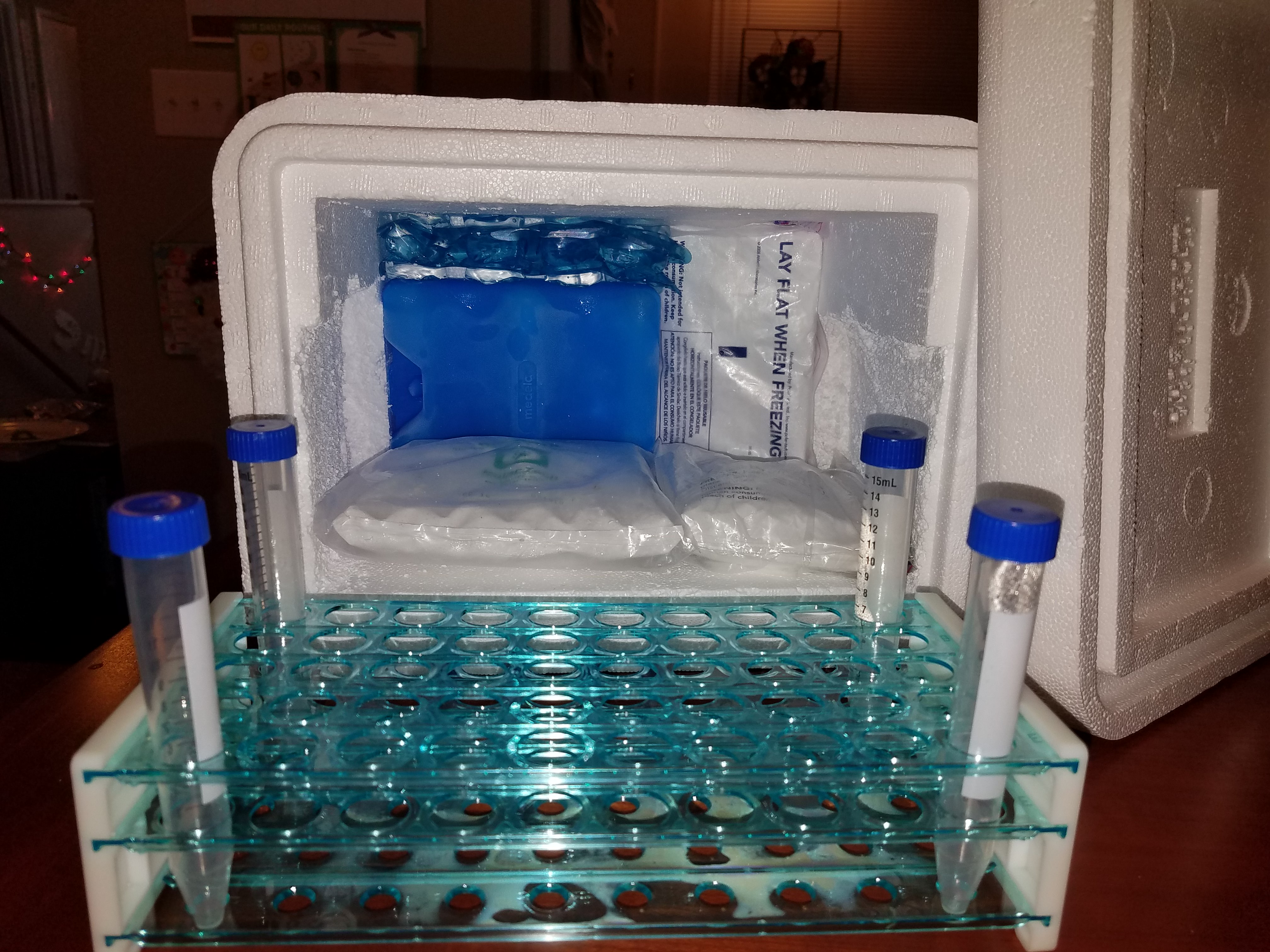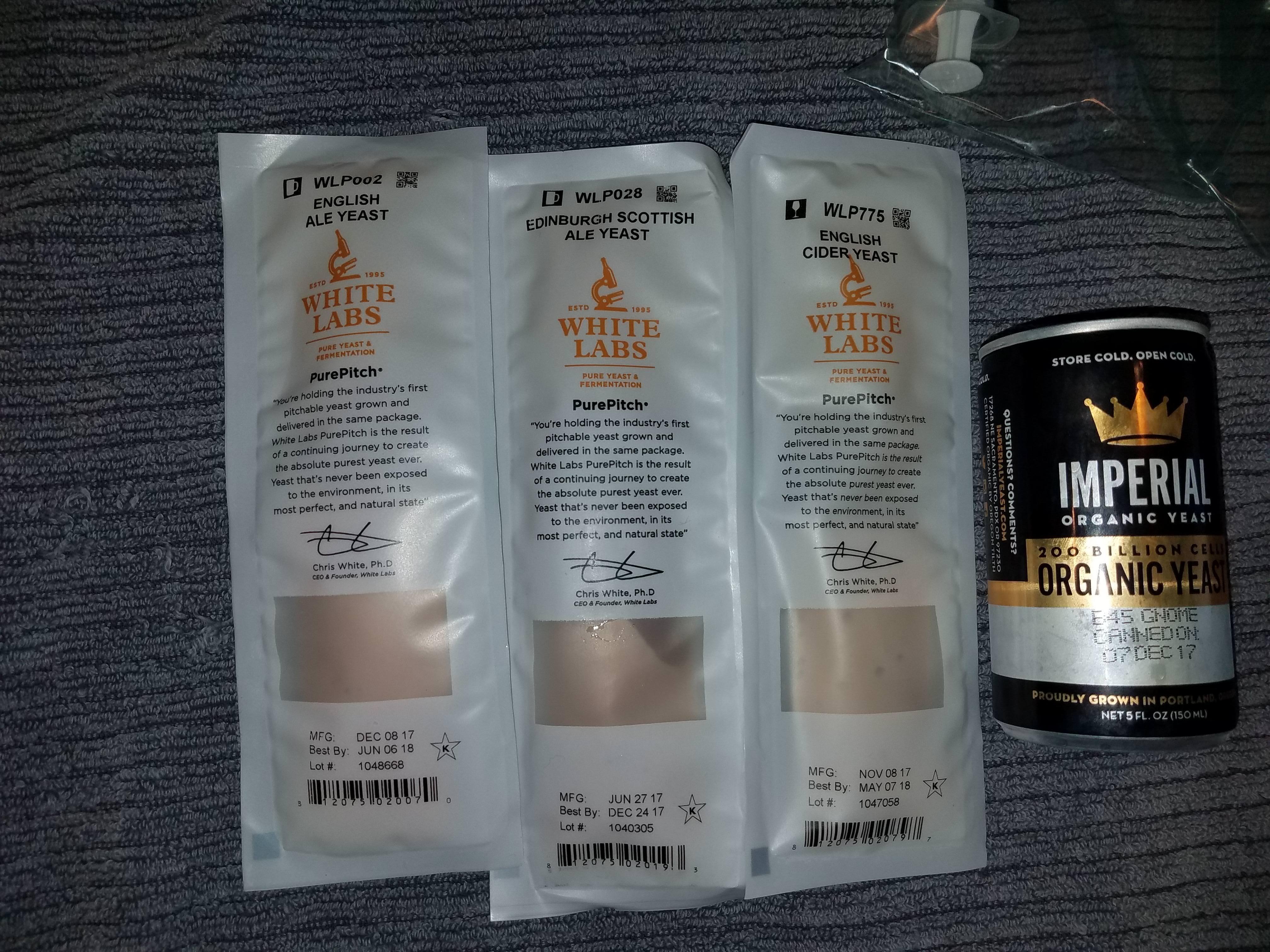BlackFurnaceBrewing
Well-Known Member
- Joined
- Apr 10, 2013
- Messages
- 56
- Reaction score
- 9
Waiting for the ole HLT to come up to temp, so thought I would update on my yeast ranching experience. I have been freezing yeast since last november with phenomenal results. I have 8 different strains right now in a small dorm-sized freezer that is used just for yeast and hops. The yeast, two samples each, are stored in 45 ml autoclavable vials in a custom closed-cell foam locker I made just to protect my investment.
Here is how I stored the yeast:
- autoclaved several (two dozen or so) vials with 14 ml of glycerin and recommended dosage of vitamin c each and store for easy use later
- purchased new and healthy White Labs strain 1 month old or less
- Set up burners, sterilized counter and used disposable sterile pipette to split WL strain into two storage vials (approx 17 -20ml) of yeast slurry each
- Recorded strain and all pertinent info and stored vials in fridge for 48 hours in preparation for freezing
- Placed vials in foam locker and froze for later use
Here is how I re-animate:
- Pull strain from freezer and place in fridge ovenight
- Sanitize 1000ml flask and then put in 175ml of canned sterile 1.040 wort
- Warm yeast with hand, and then place in flask/wort
- Let sit for 1/2 hour and then place on heated stir plate for 24 - 30 hours
On second or third stage, pull one 20 ml yeast slurry sample and place in 45 ml storage vial. Follow freezing procedures above. Pull 3ml sample and follow yeast counting procedure (with microscope).
So far my starters have been incredibly healthy. I know it sounds crazy, but they seem even more lively than before I started freezing yeast. Great/healthy/tasty batches of brew as well. Needless to say, after 8 successful starters, I am now a complete convert to yeast ranching.
Here is how I stored the yeast:
- autoclaved several (two dozen or so) vials with 14 ml of glycerin and recommended dosage of vitamin c each and store for easy use later
- purchased new and healthy White Labs strain 1 month old or less
- Set up burners, sterilized counter and used disposable sterile pipette to split WL strain into two storage vials (approx 17 -20ml) of yeast slurry each
- Recorded strain and all pertinent info and stored vials in fridge for 48 hours in preparation for freezing
- Placed vials in foam locker and froze for later use
Here is how I re-animate:
- Pull strain from freezer and place in fridge ovenight
- Sanitize 1000ml flask and then put in 175ml of canned sterile 1.040 wort
- Warm yeast with hand, and then place in flask/wort
- Let sit for 1/2 hour and then place on heated stir plate for 24 - 30 hours
On second or third stage, pull one 20 ml yeast slurry sample and place in 45 ml storage vial. Follow freezing procedures above. Pull 3ml sample and follow yeast counting procedure (with microscope).
So far my starters have been incredibly healthy. I know it sounds crazy, but they seem even more lively than before I started freezing yeast. Great/healthy/tasty batches of brew as well. Needless to say, after 8 successful starters, I am now a complete convert to yeast ranching.




